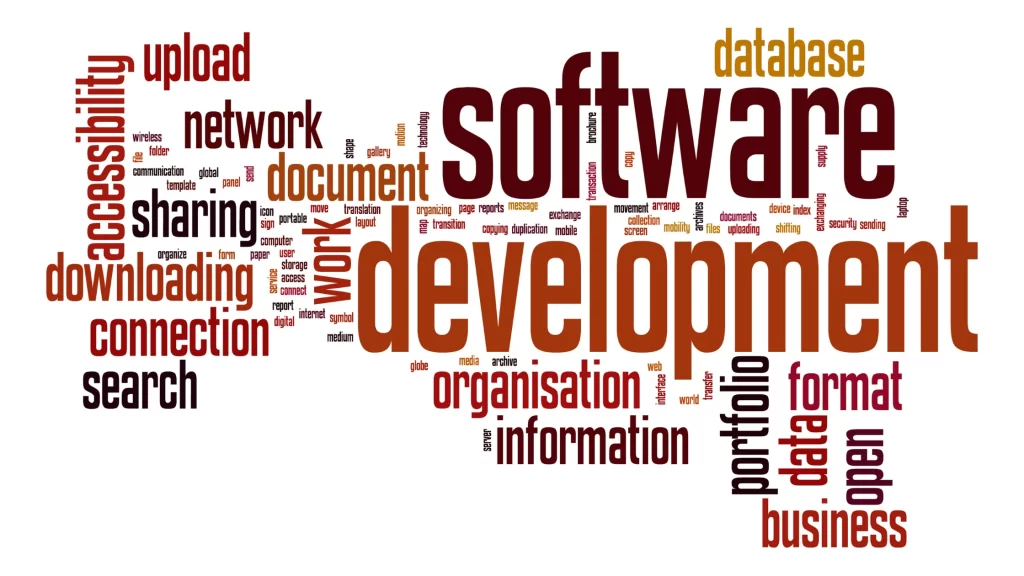Table of Contents
Companies increasingly seek ways to collaborate more effectively in today’s fast-paced technological landscape. Co-development software is one of the most innovative tools that has emerged to facilitate this.
This software enables teams to work together in real-time, sharing resources, ideas, and progress while keeping everything streamlined. This article will delve into how co-development software transforms how businesses create products and solutions.
Whether you’re a developer, a project manager, or a business leader, understanding this software is crucial for staying ahead in a competitive market.
What is co-development software?
Co-development software is a collaborative platform that allows multiple teams or individuals to work together on a project.
These software solutions often provide real-time updates, version control, and shared workspaces, making it easier for different groups to contribute simultaneously.
The primary goal of co-development software is to streamline the development process, ensuring that every team member is aligned and can access the same information, thus improving overall efficiency.
For example, developers, designers, and marketers can access the same documents, design files, and code repositories when developing a mobile app. This reduces the chances of miscommunication, delays, or rework, which is common when teams work in isolation.
The Benefits of Using Co-Development Software

Streamlined Collaboration
One key benefit of using it is the enhanced collaboration it enables. Teams can share files, comments, and feedback instantly.
Instead of relying on emails or meetings, everyone can see updates in real-time. This feature accelerates decision-making and problem-solving, especially in fast-moving industries.
Improved Version Control
Another significant advantage is the robust version control systems many co-development tools provide. In traditional workflows, multiple versions of documents or code can lead to confusion.
With it, changes are tracked, and each version is archived, so teams can always revert to previous versions if needed. This eliminates the risk of losing important data and ensures the most up-to-date information is used.
Increased Productivity
Teams collaborating seamlessly can move through tasks faster and more efficiently. It often includes task management, automated reminders, and progress-tracking features.
These tools help keep everyone focused and on schedule, ensuring that the project moves forward without unnecessary delays.
Access to a Broader Talent Pool
With cloud-based it, teams are no longer limited to local talent. Companies can collaborate with developers, designers, and other professionals worldwide. This opens access to a broader range of expertise, ideas, and perspectives, significantly enhancing a project’s creativity and quality.
Key Features to Look for in Co-Development Software
When selecting it for your team, choosing a solution that aligns with your specific needs is essential. Here are some key features to consider:
Real-Time Editing and Updates
A good co-development platform should allow team members to edit and update documents, code, or designs in real-time. This feature minimizes misunderstandings and miscommunications by ensuring that everyone is using the most recent version.
Task and Project Management Tools
Many co-development platforms integrate task management features like to-do lists, timelines, and progress tracking. These tools help teams stay organized and meet deadlines, keeping the project on track.
Customizable Permissions
Co-development software should allow you to control who can access and modify specific files or documents. Customizable permissions protect sensitive information while enabling team members to collaborate freely.
Integration with Other Tools
In today’s work environment, teams often use multiple software tools. Co-development software that integrates with other platforms like GitHub, Jira, or Slack can streamline workflows and improve communication.
Popular Co-Development Software Options

Several co-development software platforms are available, each catering to different types of teams and projects. Some of the most popular options include
- GitHub: Primarily used for software development, GitHub allows developers to collaborate on code by providing version control and issue tracking. It’s a widely used platform that helps teams manage projects effectively.
- Trello: A simple yet powerful tool for managing tasks and workflows. Teams can organize tasks into boards and lists, making tracking progress and collaborating on tasks easy.
- Figma: Popular among designers, Figma enables teams to work on design projects in real time. It allows for easy sharing of designs and collaboration on visual elements, making it ideal for cross-functional teams.
How Co-Development Software Enhances Remote Work
As more companies embrace remote work, co-development software has become essential for maintaining productivity and collaboration. These platforms enable teams to collaborate from anywhere, ensuring that distance is no longer a barrier to effective teamwork.
For instance, remote software development teams can collaborate on code, share documentation, and discuss project details without meeting in person.
This flexibility enhances productivity and helps companies tap into a global talent pool, finding the best people for the job regardless of location.
Also Read: Social Media for Artists: Top Picks for 2025
Real-life applications of Co-Development Software
Software Development
Co-development platforms like GitHub or GitLab are essential for team collaboration in software development. These tools allow developers to simultaneously work on different parts of the code, track issues, and manage pull requests.
This type of collaboration is crucial in large-scale software projects, where coordination between developers, testers, and project managers is key to success.
Product Design and Development
Platforms like Figma or InVision in product design allow designers, engineers, and product managers to collaborate on product prototypes and designs. Real-time feedback ensures that designs evolve rapidly and meet the needs of all stakeholders, from aesthetics to functionality.
Marketing and Content Creation
Even non-technical teams can benefit from co-development software. For marketing teams, tools like Asana or Trello help manage content calendars, coordinate campaigns, and track the progress of various initiatives.
Content creators can collaborate on writing, editing, and reviewing materials, ensuring all content aligns with the brand and marketing goals.
Overcoming Challenges with Co-Development Software

While co-development software offers many benefits, it’s not without its challenges. With so many tools and features, it can be overwhelming to keep track of everything.
To overcome this, teams should establish clear guidelines for using the software and ensure everyone is on the same page.
Another challenge is ensuring all team members are adequately trained on the software. A lack of knowledge can lead to inefficiencies or mistakes. To address this, companies should invest in training programs to ensure everyone is proficient in using the software.
Co-development software revolutionizes how teams collaborate, helping businesses create better products faster and more efficiently. By embracing these tools, companies can improve communication, enhance productivity, and tap into a global talent pool.
Co-development platforms will undoubtedly play a more significant role in driving innovation as technology evolves.
Investing in the right co-development software is a great place to start if you’re looking to enhance your team’s collaboration efforts.
Whether you’re a startup or an established enterprise, the right tools can help you achieve your goals more effectively and stay ahead of the competition.
In conclusion, the rise of co-development software is more than just a trend; it’s a shift toward smarter, more agile teamwork, reshaping industries worldwide. Explore these solutions today and see how they can transform your team’s workflow.




